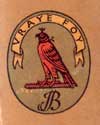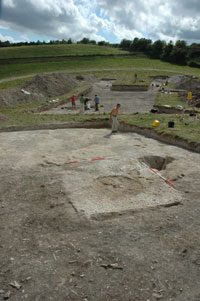Wed 16 Jan 2008
Book Review: The Archimedes Codex by Reviel Netz and William Noel
Posted by boz under BooksComments Off on Book Review: The Archimedes Codex by Reviel Netz and William Noel
 This is the story of the Archimedes palimpsest (hidden writing). Basically, a medieval prayer book was created by taking parchment from several ancient codices (books), scraping off the old text and re-using the parchment to create a new book. One of these ancient manuscripts happened to be a copy (the earliest surviving) of Archimedes Codex C.
This is the story of the Archimedes palimpsest (hidden writing). Basically, a medieval prayer book was created by taking parchment from several ancient codices (books), scraping off the old text and re-using the parchment to create a new book. One of these ancient manuscripts happened to be a copy (the earliest surviving) of Archimedes Codex C.
The old prayer book/palimpsest was purchased in 1998 at auction for $2 million. The new owner entrusted William Noel, the curator of the Walters Museum in Baltimore with the book in order to unlock it’s secrets. Reviel Netz is a Stanford University classicist, and the two alternate chapters.
I was more interested in the technology used to uncover the Archimedes text than in the text itself. However, the majority of the book concerns the text itself and how it contributes to our understanding of Greek mathematics (geometry, combinatorics, etc.). Turns out that at some point in the last 100 years 4 forged religious paintings were added to the manuscript. These made deciphering the underlying text on these pages especially difficult. Only the last 20 pages or so of this book deals with how they got past this – via high-powered X-rays. This is what initially caught my attention: they used one of the beamlines at the Stanford Linear Accelerator Center (SLAC) to do X-ray absorption studies on the manuscript. This revealed the hidden text via the Fe (iron) in the original Archimedes text’s ink.
In a previous life I actually did some experiments at SLAC using one of the high energy X-ray beam lines [1].
I think Noel is either being tongue-in-cheek (I hope so) or else is actually a new-earth creationist. At one point while discussing parchment (made from sheep skin) he says that sheep skin evolved “or was intelligently designed” with more antibiotic properties on the side facing the outside. In another passage, when discussing dates found in the codex, he says the dates as written were from the “origin of the earth” which “as everyone knows was ~5500 BC”. Again, I hope he was being tongue-in-cheek and doesn’t really believe that the earth is 7,000 years old! But that’s a minor nit and doesn’t detract from the book.
Interestingly (and sadly), as described in the book, most of the damage and deterioration of the Palimpsest took place not in the distant past, but in the 20th century. The book today is very mold damaged, brittle, and some of the pages are actually glued(!) together at the binding. This hinders reading of the underlying text, to say the least.






